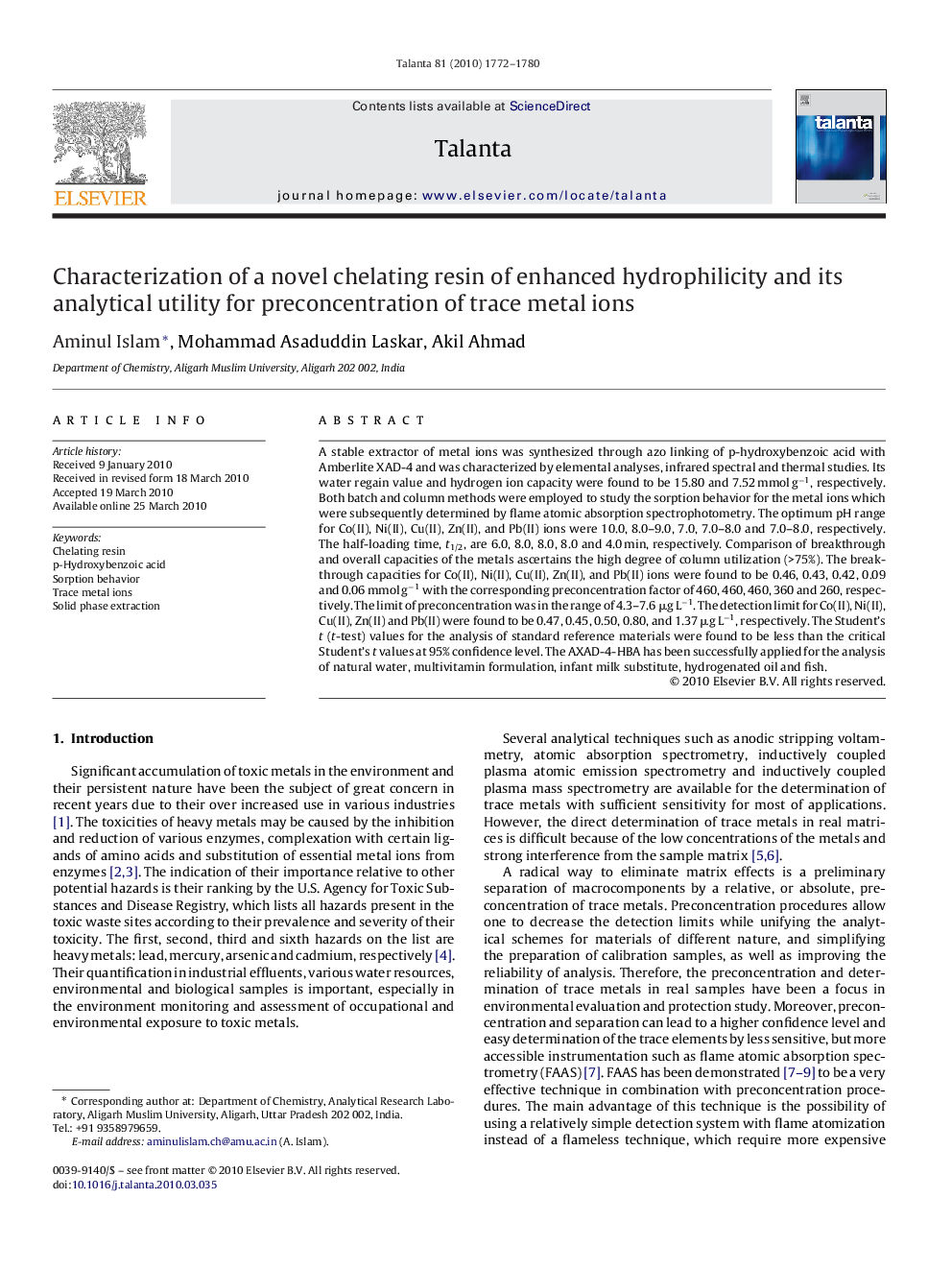| Article ID | Journal | Published Year | Pages | File Type |
|---|---|---|---|---|
| 1242703 | Talanta | 2010 | 9 Pages |
A stable extractor of metal ions was synthesized through azo linking of p-hydroxybenzoic acid with Amberlite XAD-4 and was characterized by elemental analyses, infrared spectral and thermal studies. Its water regain value and hydrogen ion capacity were found to be 15.80 and 7.52 mmol g−1, respectively. Both batch and column methods were employed to study the sorption behavior for the metal ions which were subsequently determined by flame atomic absorption spectrophotometry. The optimum pH range for Co(II), Ni(II), Cu(II), Zn(II), and Pb(II) ions were 10.0, 8.0–9.0, 7.0, 7.0–8.0 and 7.0–8.0, respectively. The half-loading time, t1/2, are 6.0, 8.0, 8.0, 8.0 and 4.0 min, respectively. Comparison of breakthrough and overall capacities of the metals ascertains the high degree of column utilization (>75%). The breakthrough capacities for Co(II), Ni(II), Cu(II), Zn(II), and Pb(II) ions were found to be 0.46, 0.43, 0.42, 0.09 and 0.06 mmol g−1 with the corresponding preconcentration factor of 460, 460, 460, 360 and 260, respectively. The limit of preconcentration was in the range of 4.3–7.6 μg L−1. The detection limit for Co(II), Ni(II), Cu(II), Zn(II) and Pb(II) were found to be 0.47, 0.45, 0.50, 0.80, and 1.37 μg L−1, respectively. The Student's t (t-test) values for the analysis of standard reference materials were found to be less than the critical Student's t values at 95% confidence level. The AXAD-4-HBA has been successfully applied for the analysis of natural water, multivitamin formulation, infant milk substitute, hydrogenated oil and fish.
